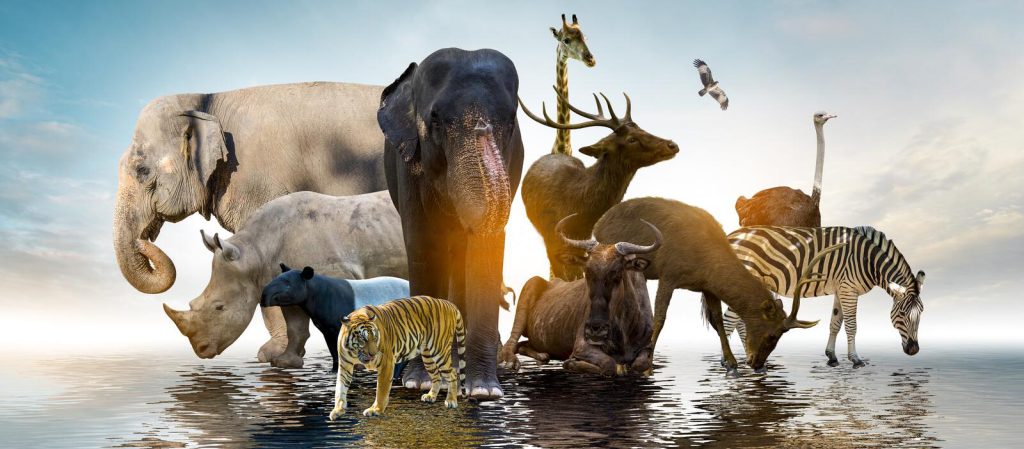Wildlife Conservation
- 5 min read
- By Phillip Imler
The effects of ecological imbalance are noticeable, which has bluntly prompted the importance of wildlife conservation in 2024. The impact of human activities and greenhouse emission has already triggered climate change. Change in weather patterns and global warming has a devastating rippling effect on the natural world. Wildlife is on the frontiers of this crisis. Climate change is intensely changing the delicate balance of our ecosystem and countless wildlife species have already pushed into extinction and multiple are on the edge of declining…
The importance of wildlife conservation lies in preserving this charming natural world and protecting the foundation of our planet’s health and well-being.

Organisms in our ecosystem depend on one another for food, so the complicated network called food chains and webs is created. If a single species goes extinct or their population level change, the other species in the ecosystem gets affected.
For example, pollinators like birds, bees, and butterflies are pollinators that help in plant reproduction. The plants provide food to herbivorous animals and also offer shelter to countless creatures. Pollinators are also crucial for growing many crops. A decline in their
population is a threat to global food security.
Predators maintain the prey population level, preventing overpopulation and maintain balance. Coral reefs support the marine life but today are transformed into barren wasteland because of warm temperature and increase in CO2 levels within the ocean. Coral reef degradation has also affected the livelihood of millions of humans, who depend on them from food and tourism.
The interconnectedness extends beyond natural world. A well-balanced ecosystem also supports human well-being. The forests purify air and water naturally. The wetlands control floods and prevent soil erosion. The mangroves you see on the coastlines protect against storms and tsunamis. Wildlife decline can cause an ecological balance and you can lose these crucial healthy services.
Habitat loss is not because of the physical transformation of landscapes. The weather pattern changes, like the increase in frequency and intensity of floods and droughts, have fragmented habitats. This has isolated wildlife population and made it hard for them to find water, food, and mates. Fragmentation has upset the migration patterns and breeding cycles, which is a threat to population sustainability. For example, the finely tuned internal compasses of the migratory birds are disturbed due to weather pattern changes, which make them miss crucial stopovers on their journey, leaving them vulnerable and exhausted.
The balance between predator-prey relationships within our ecosystem is delicate and disrupted due to climate change. Increased temperature has pushed some species to shift their ranges, while others cannot adapt as quickly. This imbalance has led to prey populations getting out of sync with their predators, causing overpopulation and weakening of the entire food web. Warming temperatures are also ideal for spreading invasive species, threatening native wildlife by competing for resources and introducing diseases.
Therefore, protecting and restoring wildlife habitats has become necessary to regain the disrupted ecological balance and reduce climate change.
Beyond the ecological and practical benefits, the natural world with diverse species is a source of inspiration and wonders. The loss of a single species represents not just the disappearance of an organism, but the extermination of a unique evolutionary pedigree and the irreplaceable loss of rare beauty.
The year 2024 also emphasizes on the economic importance of wildlife conservation. Eco-tourism is a rapidly growing sector that to attract visitors there is a need for a healthy wildlife population and intact ecosystem. Tourism generates income that can help the local communities to protect wildlife and their habitats. Besides, a healthy ecosystem offers natural resources that support various industries-from fisheries to medicine.
All this reveals how important wildlife is to our planet and ecosystem. There is a need for taking extreme protection measures to avoid the disappearance of even a single species.
Wildlife conservation efforts are on-going but still there are some challenges that make them slow or less effective. Interconnectedness and delicacy of our ecosystem is also an issue because addressing one can create another like unintended consequences on the environment or other species. Addressing human factors needs behavioural changes and cooperation from everyone including governments, communities, and industries.
The conservation organizations have limited funding, personnel and infrastructure to implement programs and monitor the progress. Besides funding, there is the issue of political instability, poor enforcement of existing laws, and corruption that hinders conservation programs.
Climate change can accelerate threats to existing wildlife like habitat loss and fragmentation, making conservation efforts more difficult. Many people are unaware about the importance of wild life or don’t fully understand the consequence of their actions on the natural world. Raising awareness and fostering responsibility among the global public is essential for conservation efforts.
Wildlife conservation combat has its share of victories. The black rhinoceros population dwindled in the 1970s. With combined efforts through the introduction of strict poaching measures, educational campaigns, and captive breeding programs, they brought the black
rhinos back from disappearing. The estimates suggest that the rise from 2000 individuals in 1990 has counted more than 5000 rhinos today.
Another success story is about the California condor. In the 1980s, there were a handful of them. They were all captured and placed under a captive breeding program. Lead ammunition was banned in California. The carefully newly bred condors were reintroduced to their former habitats. Artificial nesting sites were created to encourage breeding in the wild. From 22 individuals in 1987, the condor population has grown to more than 300.
In 2024, the urgency for wildlife conservation needs instant, conclusive actions like:
In 2024, let’s take a resolution to support wildlife conservation rather than watch them disappear. Recognize how our planet’s ecosystem is interconnected. Understand the economic and ethical requirements of a healthy ecosystem.
Ultimately, awareness of responsibility towards our planet collectively will ensure that wildlife thrives beside humanity in the future.